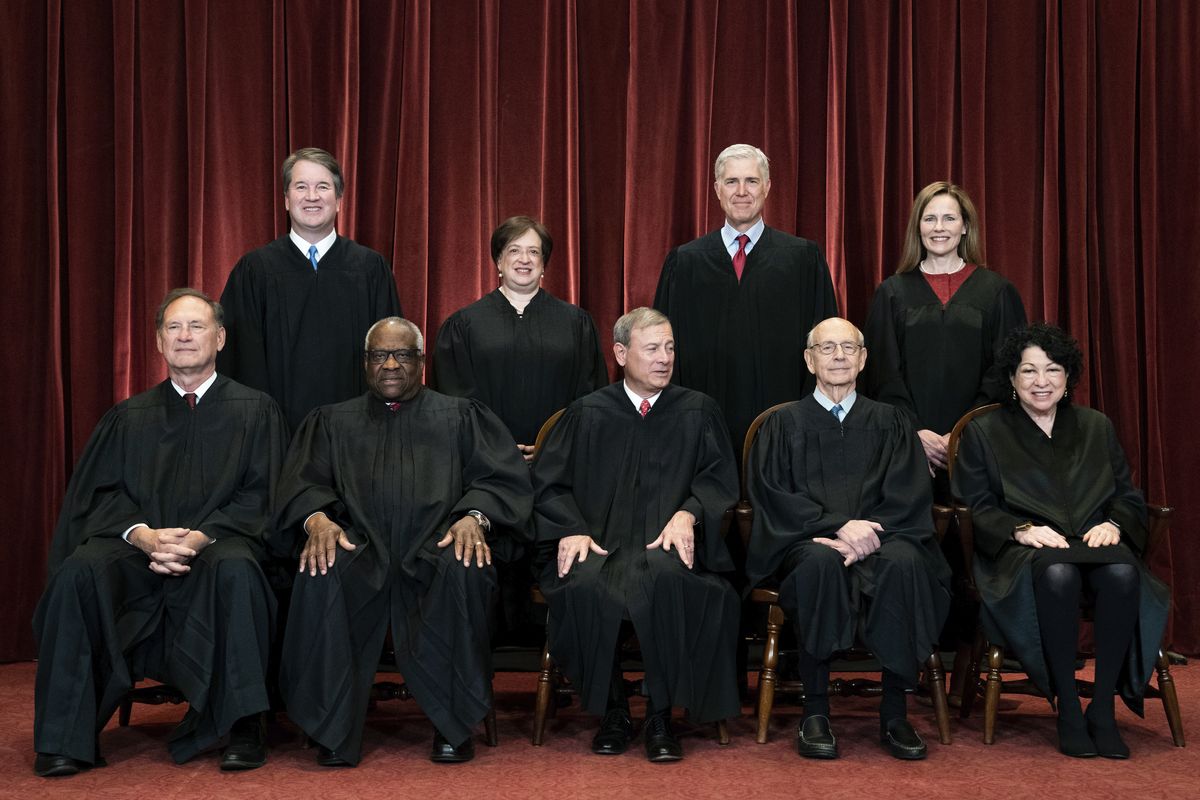We the People: Supreme Court rulings sometimes have dramatic effects. But not always

Each week, The Spokesman-Review examines one question from the Naturalization Test immigrants must pass to become United States citizens.
Today’s Question: What is the highest court in the United States?
Every year, the U.S. Supreme Court, the nation’s highest court, issues several high-profile decisions that can have dramatic impacts on society.
But much of what it does garners few headlines.
It’s easy to imagine that Supreme Court justices are constantly making grandiose pronouncements and judgments on the Constitution, with the fabric of how the federal government functions hanging in the balance.
Still, less than half of the cases the Court hears are constitutional questions, and many of them are not all that dramatic.
“Over half of them involve matters that are fairly mundane statutory matters to us like tax issues or bankruptcy,” said Russel Wheeler, a visiting fellow of governance studies at the Brookings Institution.
The Supreme Court often rules on disputes regarding normal federal law rather than the Constitution because it operates as the top dog in the federal court system on top of being a constitutional court.
“It’s not just a constitutional court,” said Scott Lemieux, an assistant teaching professor at the University of Washington. “It’s theoretically the court of last resort for any case involving federal law.”
Of course, the Supreme Court doesn’t have time to hear every federal case in the country, with it only hearing about 60 to 80, or less than 1 %, of federal cases a year.
So, even if some of the cases are mundane, every case that gets heard by the Supreme Court is usually important to the interpretation of federal law or the Constitution.
And in landmark cases, the Supreme Court’s ability to interpret existing laws or strike down legislation, known as judicial review, can be very powerful.
Most recently, the Supreme Court ruled on the Voting Rights Act, and essentially watered down a part of the bill that could have limited voting restrictions across that are getting pushed in states around the country. It was a huge blow to progressives who were looking to protect wide access to voting.
And with Congress becoming increasingly deadlocked and unable to pass new legislation, the interpretation of existing laws will only become more important as time goes on.
But despite its importance now, it wasn’t guaranteed that the Supreme Court would become so powerful.
“It’s not at all clear how important the framers thought the Supreme Court was going to be,” Wheeler said.
The Constitution devotes much less space to establishing the judiciary branch than it does in establishing the executive and legislative. Wheeler said the framers may have thought state courts would be sufficient, with a couple federal issues for federal courts here and there.
It did, however, establish one practice that remains to this day: justices holding their positions “during Good behavior.”
Justices can serve for their entire life once they’re appointed, but can be impeached by Congress.
The only justice to ever be impeached was Samuel Chase on grounds he was too partisan in 1804, but he was acquitted by the Senate.
The Constitution’s vagueness meant that the Supreme Court and the federal court system as a whole wasn’t really all that important or as functional when it first started out.
For example, John Jay, the first chief justice of the Supreme Court, only heard four cases during his over five-year tenure and eventually relinquished the role to run for governor of New York.
Chief Justice John Marshall, considered perhaps the most influential chief justice ever, innovated the role of a judicial statesman and headed numerous landmark cases including Marbury v. Madison during his record 34-year tenure in the first half of the nineteenth century.
But while Marshall was vital in the development of the Supreme Court, the court wasn’t a prominent part of daily life and politics until the Civil War.
“It really started after the civil war,” Lemieux said. “There was a conscious decision by American political leaders of late 19th century that a lot of policy disputes were best resolved by judges.”
The magic number of nine Supreme Court justices also was created around this time in 1869 during President Ulysses S. Grant’s first term, and for no real compelling reason since the Constitution doesn’t specify.
The number of justices shuffled around from as low as five to as high as 10 due to partisan squabbles in the nineteenth century, but it stayed at nine for more than 150 years.
Over those 150 years, the Supreme Court developed increasing importance and is now the political and legal powerhouse it is today.